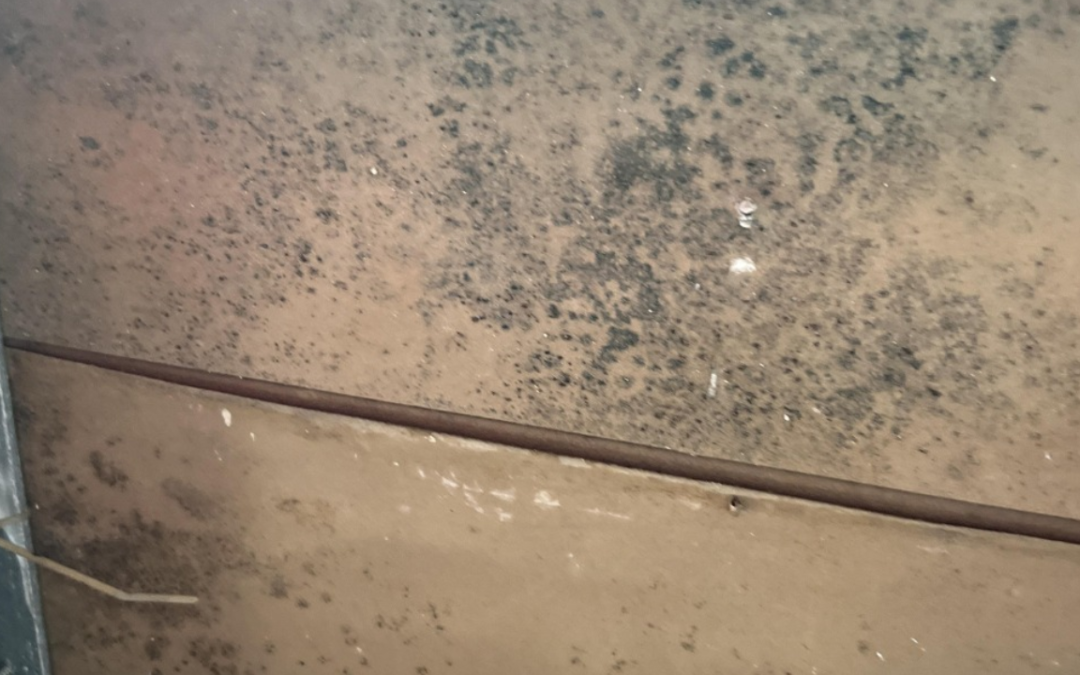Mold can grow hidden behind drywall after water damage, high humidity, or leaks, making it difficult to detect. Left unchecked, it can lead to structural damage and health problems. Here’s how to spot the warning signs of hidden mold behind walls and when to call a professional.
1. Musty Odors in Certain Areas
A persistent musty smell is one of the biggest indicators of mold behind drywall. Mold releases microbial volatile organic compounds (MVOCs), which create a damp, earthy odor. If the smell:
- Gets stronger after rain or high humidity,
- Is noticeable in specific rooms or near walls,
- Lingers even after cleaning,
…it could mean mold is growing inside your walls.
2. Discoloration or Staining on Walls
Mold often causes visible stains on drywall before it breaks through. Look for:
- Yellow, brown, or black stains spreading on walls or ceilings.
- Water spots or streaks that keep growing over time.
- Dark patches or spots near baseboards, outlets, or vents.
Even small stains could indicate a larger mold problem hidden inside.
3. Peeling, Bubbling, or Warped Paint and Wallpaper
When moisture gets trapped behind drywall, it weakens the paint and wallpaper, causing:
- Bubbling or peeling paint in localized areas.
- Wallpaper lifting or warping, especially at the seams.
- Soft or bulging drywall, which feels damp to the touch.
If your walls look or feel different, it could mean mold is growing underneath.
4. Increased Allergy or Respiratory Symptoms
Mold releases airborne spores that can cause allergic reactions and respiratory issues. If you or family members experience:
- Coughing, sneezing, or itchy eyes,
- Worsening asthma or breathing difficulties,
- Frequent headaches or fatigue,
…especially when inside your home, mold could be hiding behind the drywall.
5. Soft or Crumbling Drywall
Mold weakens drywall, making it feel:
- Soft or spongy when pressed,
- Crumbly or brittle, breaking apart easily,
- Warped or sagging, especially near moisture-prone areas.
If your drywall loses its firmness, mold may already be breaking down the material from behind.
6. Water Damage or Past Leaks
Any history of leaks or flooding increases the chances of hidden mold. Check areas that have:
- Past plumbing leaks (under sinks, behind appliances, or near pipes).
- Roof or ceiling leaks that left water stains.
- Basement or foundation seepage, leading to moisture buildup.
Even if the leak was fixed, mold may have already developed behind the walls.
How to Confirm Mold Behind Drywall
If you suspect mold inside your walls, here’s how to check:
Use a Moisture Meter – High moisture levels (above 16%) could indicate hidden mold.
Tap on the Wall – Hollow or soft areas suggest deteriorated drywall from mold.
Remove an Outlet Cover – Shine a flashlight inside to check for mold growth.
Cut a Small Test Hole – If safe, remove a small section of drywall for visual inspection.
If mold is present, DO NOT disturb it further, as it can release airborne spores.
When to Call a Mold Remediation Professional
You should contact a mold removal expert if:
- Mold is suspected but not visible.
- The musty odor persists, even after cleaning.
- You experience ongoing allergy symptoms at home.
- The affected area is larger than 10 square feet.
Restoration Cincinnati specializes in mold inspections, testing, and professional mold removal to ensure your home is safe.
Suspect Mold Behind Your Walls? Call Now!
Hidden mold spreads fast, causing health issues and costly damage. If you think mold is behind your drywall, act now! Call 859-287-4195 or visit our website to schedule a professional mold inspection today!

